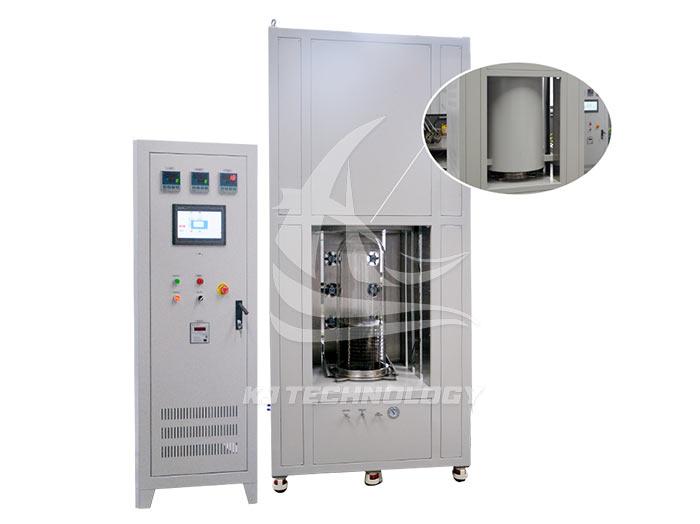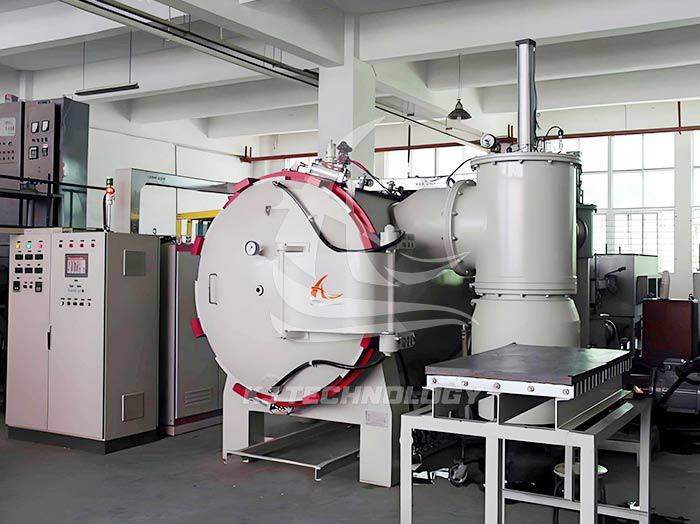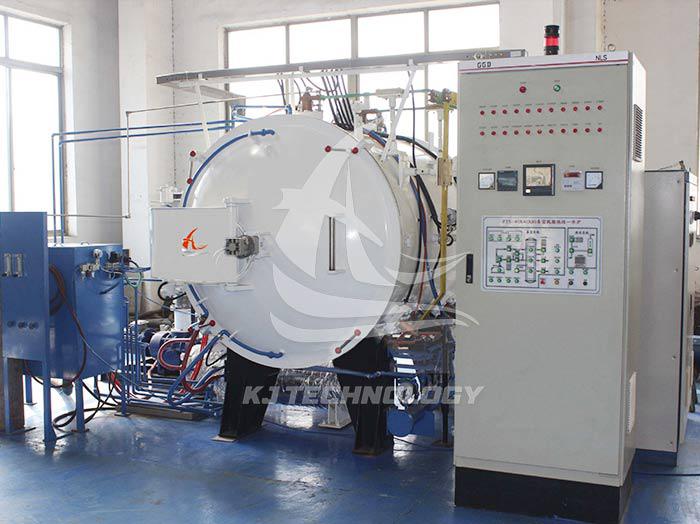Application fields of large-sized furnace vacuum heat treatment furnace
 09-29-2025 Author: KJ technology
09-29-2025 Author: KJ technology
Large scale furnace vacuum heat treatment furnaces play a key role in aerospace, automotive manufacturing, new energy materials, semiconductor industry, mold processing, medical equipment and other fields due to their advantages of no oxidation, no pollution, high process accuracy, and flexible and controllable cooling. Specific applications are as follows:
1. Aerospace field
Engine blade processing: Aircraft engine blades work in extreme high temperature, high pressure, and high-speed environments, and materials are often made of nickel based or cobalt based superalloys. The heat treatment of such materials must be carried out under high vacuum and precise temperature control to ensure their high-temperature strength, creep resistance, and fatigue life. For example, the "solid solution+aging" treatment of single crystal blades needs to be carried out under conditions of a maximum temperature of 1400 ℃ and a vacuum degree of 10 ⁻⁴ Pa. The temperature uniformity inside the furnace should not exceed ± 5 ℃, and the pressure rise rate should be less than 0.27 Pa/h (metal screen furnace type).
Blade repair: The high-temperature brazing and coating processes in blade repair also need to be completed under precise partial pressure control (argon or hydrogen) to meet the requirements of aviation standards.
2. In the field of automobile manufacturing
Gear parts processing: Automotive gearbox gears require high surface hardness and wear resistance, while maintaining toughness in the core. Traditional atmosphere carburizing can easily lead to internal oxidation and deformation problems. A large-sized furnace vacuum heat treatment furnace can perform carburizing in a high vacuum environment, avoiding internal oxidation and ensuring uniform and consistent infiltration layer; Subsequent cooperation with high-pressure gas quenching up to 15 bar significantly reduces gear deformation, reduces subsequent processing volume, and improves production efficiency and product qualification rate. At the same time, the vacuum environment has no exhaust emissions, which is more in line with the trend of green manufacturing.
3. In the field of new energy materials
Sintering of positive electrode materials for lithium batteries: In the sintering of positive electrode materials for lithium batteries, LiNi ₀ can be achieved by controlling the oxygen partial pressure (10-100Pa) and temperature gradient in the furnace (preheating section 500 ℃ → reaction section 900 ℃ → cooling section 200 ℃) ₈Co₀. ₁Mn₀. The uniform doping of ₁ O ₂ (NCM811) material has resulted in a battery cycle life exceeding 2000 times.
Retired battery recycling: In the field of retired battery recycling, the vacuum pyrolysis process can separate electrode materials and separators at 500-800 ℃, resulting in higher recovery rates for cobalt, nickel, and lithium, and reducing wastewater emissions compared to wet metallurgical processes.
4. Semiconductor industry field
Welding of integrated circuit lead frame: In the welding of integrated circuit lead frame, vacuum brazing process (vacuum degree 10 ⁻ ³ Pa, temperature 300-600 ℃) can avoid the influence of oxide layer on the bonding strength between Cu alloy and ceramic substrate, and the defect rate of solder joints is lower, meeting the requirements of 5G communication equipment for high-frequency signal transmission stability.
Diffusion annealing of crystalline silicon solar cells: In the diffusion annealing of crystalline silicon solar cells, the POCl3 atmosphere and high temperature of 900 ℃ work together to form a uniform phosphorus doped layer, which improves the photoelectric conversion efficiency.
5. Mold processing field
Preparation of Hard Alloy Parts: In the field of powder metallurgy, vacuum sintering technology can produce hard alloy parts with higher density.
Mold steel treatment: Suitable for vacuum heat treatment of cold and hot work mold steel, high-speed steel, elastic alloys, high-temperature alloys, stainless steel, titanium alloys, magnetic materials and other materials, which can improve the wear resistance, toughness and service life of molds.
6. Medical device field
Surgical instrument handling: 316L stainless steel surgical instruments have lower surface roughness after vacuum annealing at 1050 ℃, and do not require subsequent polishing.
Implant manufacturing: The manufacturing of sterile instruments and implants requires highly purified processes through vacuum furnaces to ensure product biocompatibility and safety.








